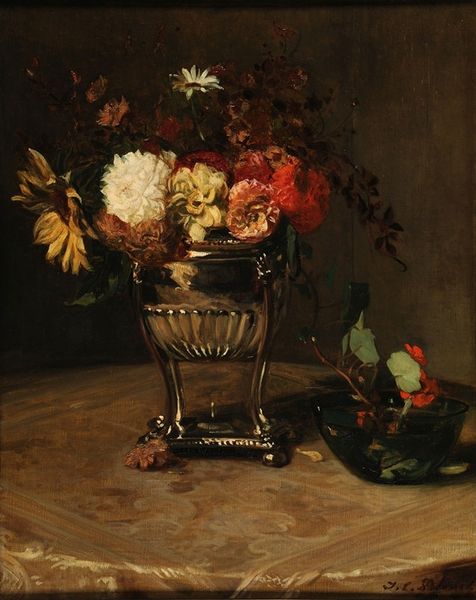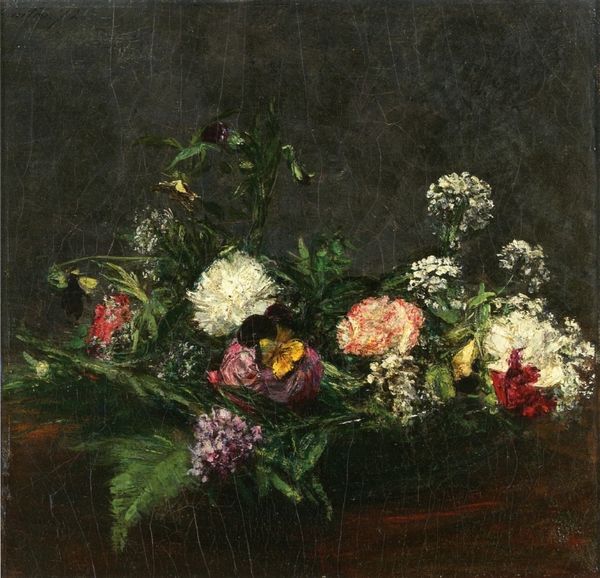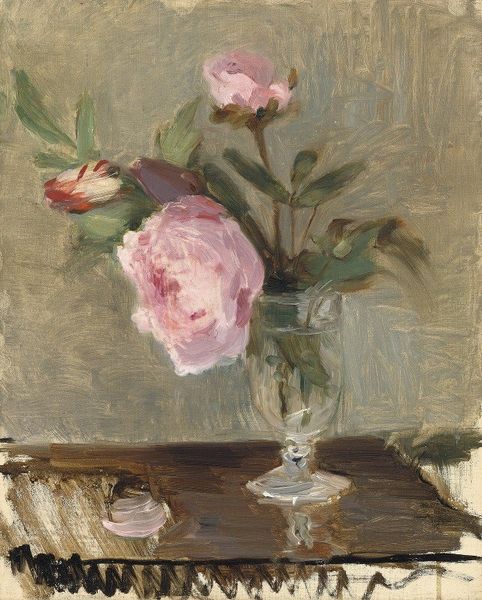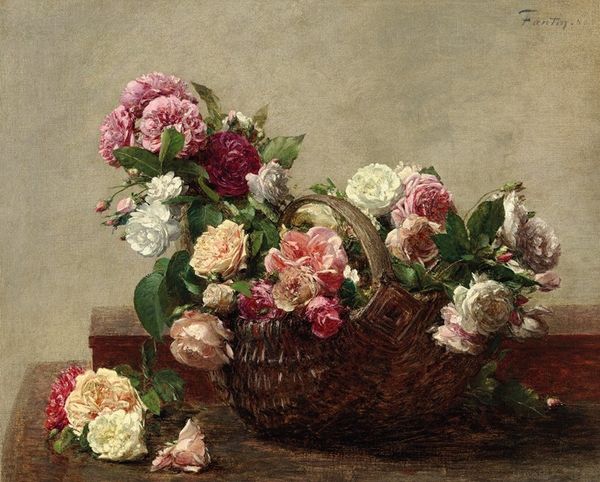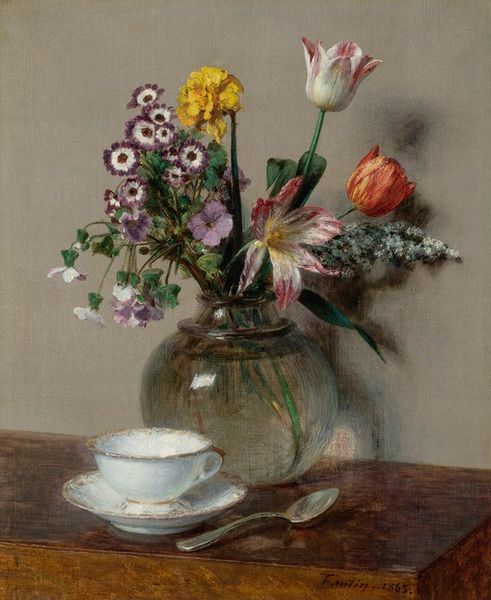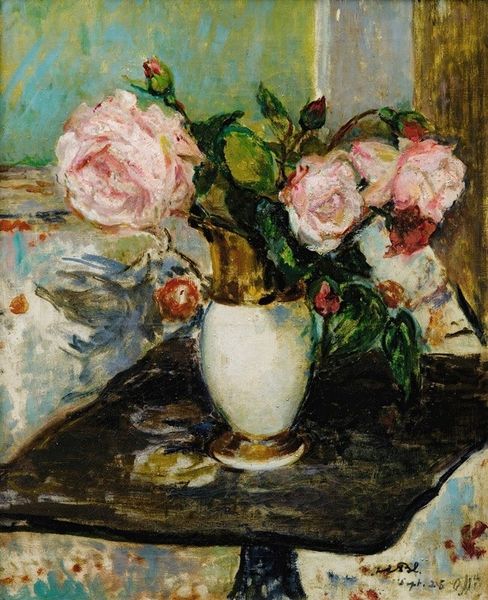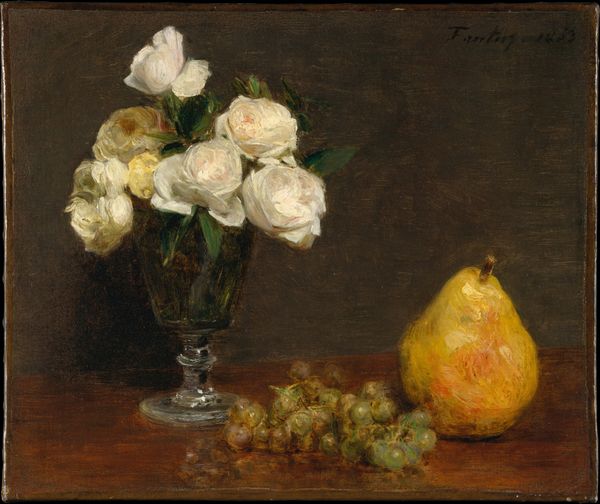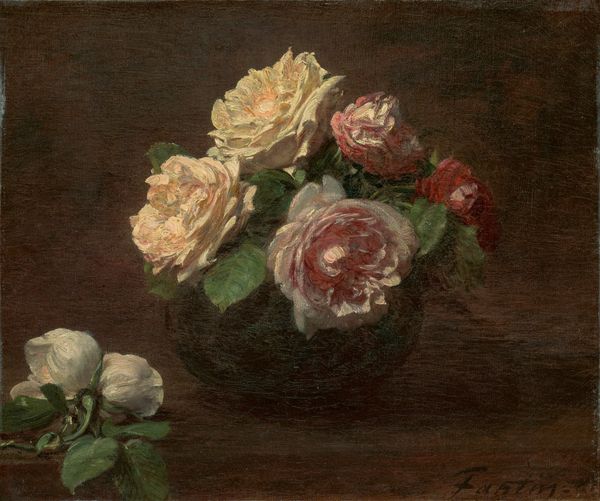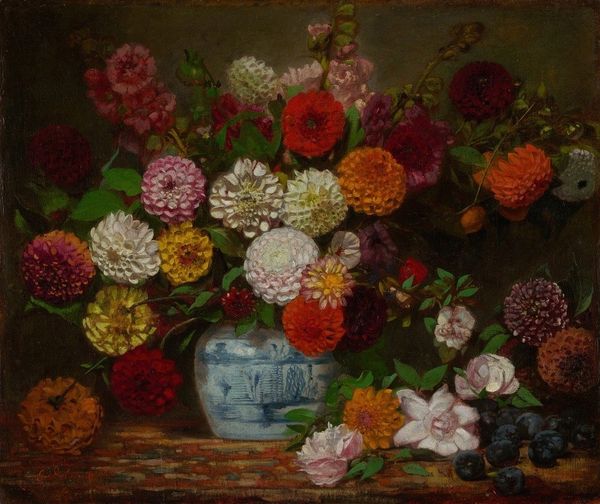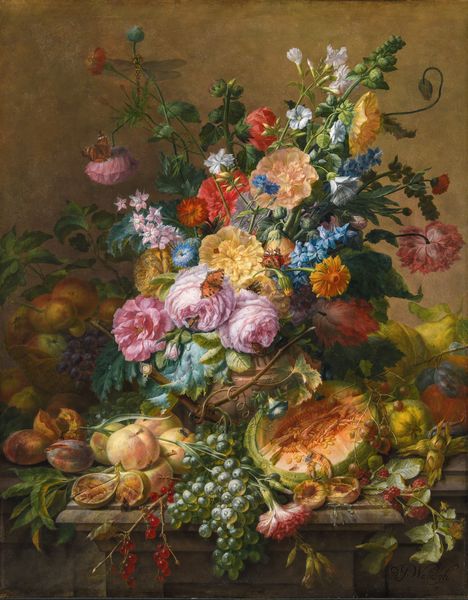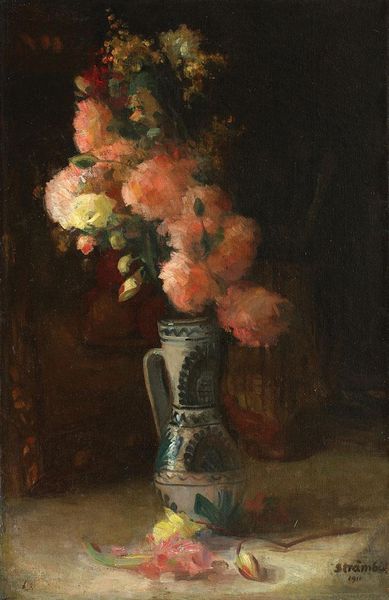
Copyright: Public domain
Curator: Here we have Georgios Jakobides' "Platter with Seashells, Roses, Pearls and Earrings," created in 1920. Editor: Immediately, I'm struck by the luminescence. It feels almost like capturing a fleeting moment in time—the way light catches the pearls, the way the roses seem almost too perfect. It feels luxurious but melancholic, maybe even nostalgic. Curator: It's interesting that you use the word 'luxurious'—seashells in paintings throughout the Dutch Golden Age certainly signaled wealth and global trade, and still do, in many cultures. This composition really lends itself to multiple readings and it's interesting Jakobides created this still life with, what appears to be, familiar subjects. The pearls, seashells, earrings and roses all signal femininity. Editor: But how do we interpret them together? Are they symbols of something beyond their literal forms? Roses represent love or beauty, but what happens when they are juxtaposed with inert, though visually striking, objects like seashells and pearls? Did Jakobides arrange these in such a way as to explore tensions of the gendered gaze of wealth, value and the labor tied to it all? Curator: Precisely! The shell could evoke ideas of journeys, long voyages to procure pearls, roses as currency for a woman's virtue or affection and earrings a sort of marking or indicator. Editor: All made physical in paint – consider how he uses oil to construct these objects, laying down textures and subtle hues, crafting not just a visual representation but a material fiction, even. Curator: Indeed, Jakobides uses these iconic objects in an almost coded dialogue, speaking through materiality to cultural ideas. He builds the artwork as much as it builds the culture. Editor: And the brushstrokes! Thick, generous, like he is actively present in the making of the work – there is something powerful about the fact that this is something manmade when compared to natural and material objects. Curator: Looking at it this way enriches how we can come to understand art, from the perspective of materials, and from that of its ability to reflect inner symbolism that shapes societies. Editor: It adds such a weight to the piece—something more than mere beauty and more connected to history, labor, love, desire, beauty itself, or perhaps the price and pursuit of all of these things!
Comments
No comments
Be the first to comment and join the conversation on the ultimate creative platform.

